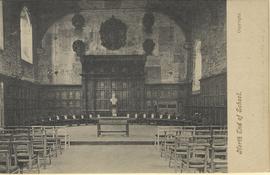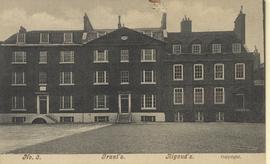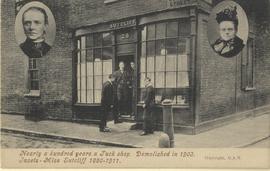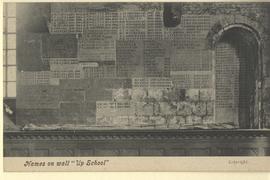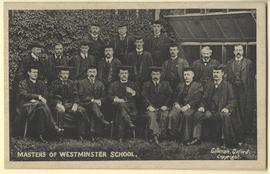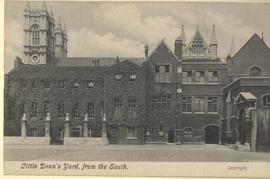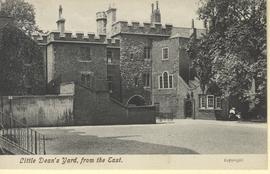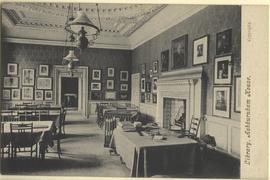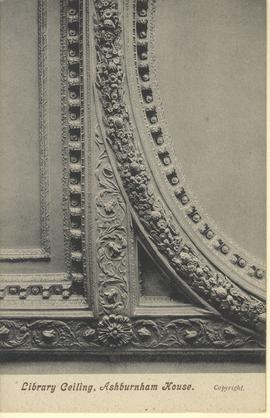- GB 2014 WS-02-POS-01-05
- Item
- c.1911
One copy annotated on reverse as follows, by R.S. Chalk:
'Dr. Busby’s Chair (for HM) and 24 seats for Monitorial Council. My seat in 1923-4 was No. 6 on HM’s right- at that time only 13 out of 24 seats were occupied. (Tho’ never a House Monitor I was allotted a place on the Council as First Classic)
The Shell recess of course obscured by the canopy behind HM’s Choir, bearing arms of former HMs. On either side may be seen some of the exquisitely blazoned arms of OWW on the panelling, an unforgettable feature of School.
The white objects on the seats are hand-tablets for Latin Prayers (the Council Chanted the Versicles, the rest of the School the Responses.) The old harmonium may be seen on the right. We invariably sang Psalms 67 or 123, in traditional ‘English’ pronunciation.
During my time two Masters’ Chairs dating from Henry VIII were presented and stood on either side of the Rod Table (in foreground).
The rods may be seen protruding from the drawer. I witnessed four ‘handings’ between 1921-4. Deeply impressive. Four swishes on back of hand only- but followed by tight house-tanning.'

